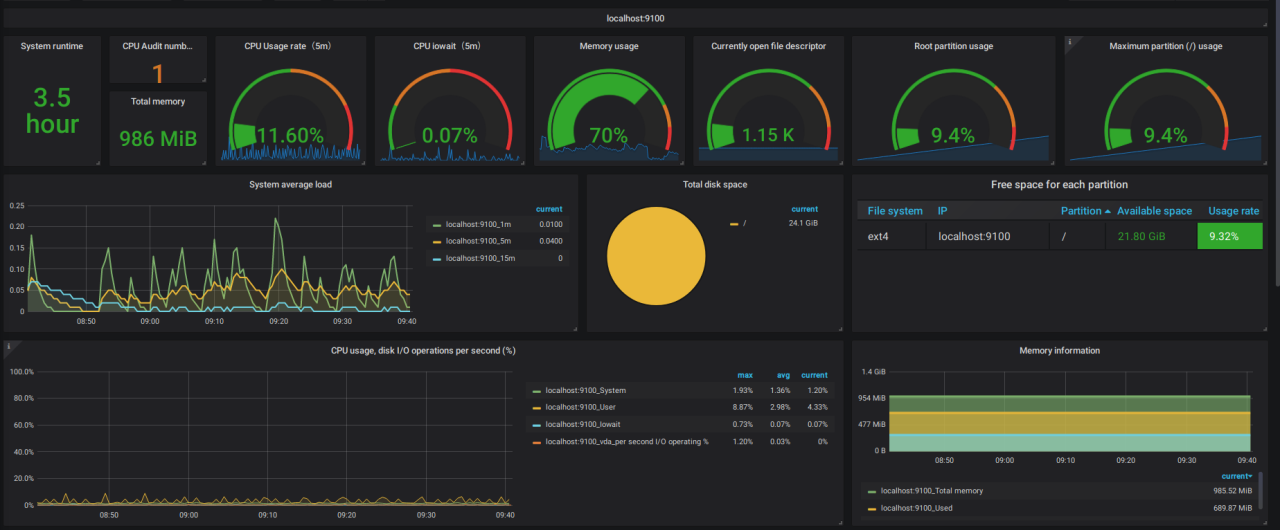In today’s digital landscape, businesses rely heavily on their servers to maintain seamless operations. Server monitoring tools are essential for ensuring optimal performance, identifying potential failures, and minimizing downtime. With numerous options available, selecting the right monitoring tool can be overwhelming. This article provides an in-depth comparison of the best server monitoring tools to help you make an informed decision.
What is Server Monitoring?
Server monitoring refers to the continuous tracking of server performance, uptime, and overall health. These tools collect data related to CPU usage, memory consumption, disk usage, and network traffic, allowing IT professionals to detect and resolve issues before they escalate. Proper server monitoring improves system reliability, enhances security, and optimizes resource utilization.
Key Features to Consider in Server Monitoring Tools
When choosing a server monitoring tool, consider the following features:
A. Real-time Monitoring – The ability to track server performance in real-time ensures proactive issue resolution.
B. Customizable Alerts – Alerts notify administrators of potential issues, reducing downtime and improving efficiency.
C. Comprehensive Reporting – Detailed reports help analyze historical data and improve future server performance.
D. Scalability – A good monitoring tool should grow with your business and handle increasing workloads.
E. Ease of Use – An intuitive interface simplifies setup and daily operations.
F. Integration Capabilities – Compatibility with existing infrastructure and third-party applications is crucial.
G. Security and Compliance – Ensuring data protection and compliance with industry standards is a must.
H. Cost-effectiveness – The tool should offer value for money based on its features and performance.
Top Server Monitoring Tools Comparison
1. Nagios
Overview: Nagios is one of the most widely used open-source server monitoring solutions, known for its flexibility and scalability.
Key Features:
A. Real-time server health monitoring B. Extensive plugin support C. Customizable alerting system D. Comprehensive reporting and log analysis E. Active community support
Pros:
- Highly customizable
- Large community and extensive documentation
- Supports both agent-based and agentless monitoring
Cons:
- Steep learning curve for beginners
- Requires manual configuration
2. Zabbix
Overview: Zabbix is another powerful open-source server monitoring tool that offers real-time monitoring and advanced data visualization.
Key Features:
A. Auto-discovery of network devices B. Real-time performance tracking C. Custom dashboard and reporting D. Predictive analytics and trend analysis E. Supports multiple operating systems
Pros:
- Free and open-source
- Scalable for enterprise-level monitoring
- Strong visualization and reporting tools
Cons:
- Initial setup can be complex
- Requires additional resources for high-performance monitoring
3. SolarWinds Server & Application Monitor
Overview: SolarWinds Server & Application Monitor (SAM) is a commercial solution that provides in-depth server monitoring with a user-friendly interface.
Key Features:
A. Agent-based and agentless monitoring B. Intuitive dashboard with advanced reporting C. Application performance insights D. Pre-configured monitoring templates E. Automatic discovery of server components
Pros:
- Easy to use with minimal setup
- Comprehensive performance insights
- Strong integration with other SolarWinds tools
Cons:
- Expensive for small businesses
- May require additional customization for complex environments
4. Datadog

Overview: Datadog is a cloud-based monitoring solution offering real-time insights into server performance, security, and logs.
Key Features:
A. Cloud-native monitoring B. AI-powered anomaly detection C. Customizable alerts and dashboards D. Full-stack observability with log management E. API-based integration
Pros:
- Easy integration with cloud platforms
- Scalable for large enterprises
- AI-driven insights for proactive monitoring
Cons:
- Pricing can be high for small teams
- Steeper learning curve for advanced features
5. New Relic
Overview: New Relic provides full-stack monitoring and observability, making it an ideal choice for businesses looking for a comprehensive solution.
Key Features:
A. AI-powered anomaly detection B. Distributed tracing and performance analytics C. Cloud and hybrid monitoring D. Custom alerting and dashboards E. Strong third-party integrations
Pros:
- Advanced analytics and AI-driven insights
- Seamless integration with cloud services
- Robust alerting system
Cons:
- Higher pricing for premium features
- Can be overwhelming for beginners
Choosing the Right Server Monitoring Tool
When selecting a server monitoring tool, consider the following:
A. Business Needs – Identify your specific monitoring requirements and business goals.
B. Budget – Determine how much you are willing to invest in a monitoring solution.
C. Scalability – Ensure the tool can grow with your business.
D. Ease of Use – Consider tools with user-friendly interfaces for smoother operation.
E. Support and Documentation – Check for reliable customer support and extensive documentation.
F. Integration Capabilities – Make sure the tool integrates with your existing infrastructure.














